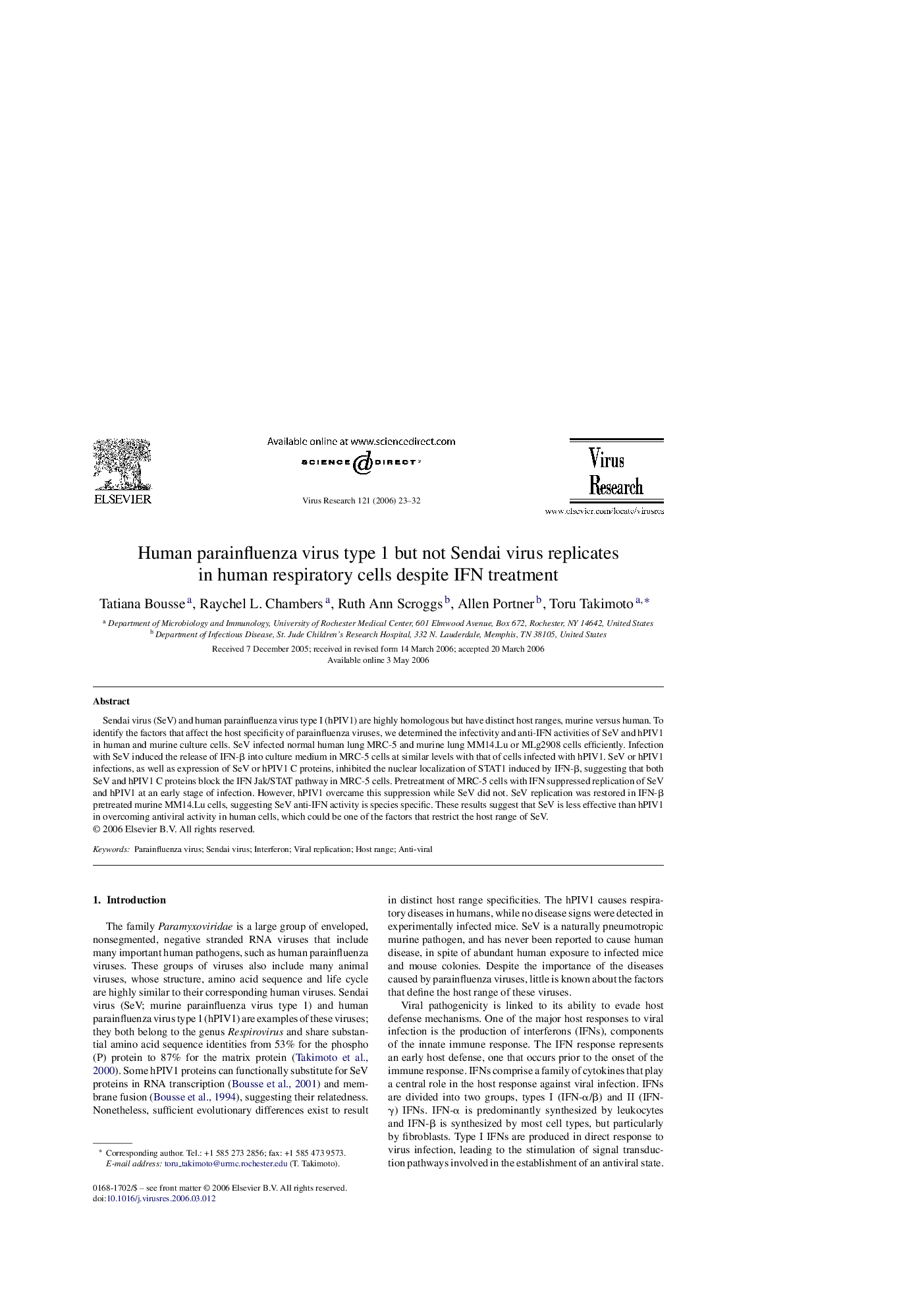| Article ID | Journal | Published Year | Pages | File Type |
|---|---|---|---|---|
| 3431123 | Virus Research | 2006 | 10 Pages |
Sendai virus (SeV) and human parainfluenza virus type I (hPIV1) are highly homologous but have distinct host ranges, murine versus human. To identify the factors that affect the host specificity of parainfluenza viruses, we determined the infectivity and anti-IFN activities of SeV and hPIV1 in human and murine culture cells. SeV infected normal human lung MRC-5 and murine lung MM14.Lu or MLg2908 cells efficiently. Infection with SeV induced the release of IFN-β into culture medium in MRC-5 cells at similar levels with that of cells infected with hPIV1. SeV or hPIV1 infections, as well as expression of SeV or hPIV1 C proteins, inhibited the nuclear localization of STAT1 induced by IFN-β, suggesting that both SeV and hPIV1 C proteins block the IFN Jak/STAT pathway in MRC-5 cells. Pretreatment of MRC-5 cells with IFN suppressed replication of SeV and hPIV1 at an early stage of infection. However, hPIV1 overcame this suppression while SeV did not. SeV replication was restored in IFN-β pretreated murine MM14.Lu cells, suggesting SeV anti-IFN activity is species specific. These results suggest that SeV is less effective than hPIV1 in overcoming antiviral activity in human cells, which could be one of the factors that restrict the host range of SeV.
